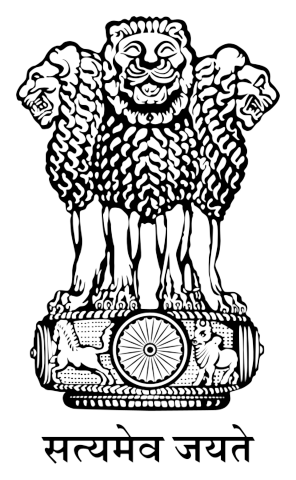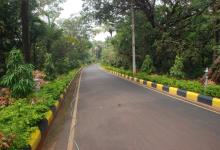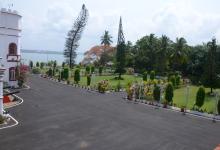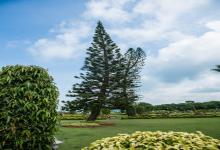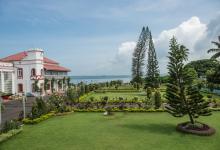The Raj Bhavan Estate, which is comprised of a spur surrounded on three sides by sea, has an area of about 80 acres. One massive laterite stone wall exists to the East, which serves as its boundary on that side. On the sea-shore, there are masonry walls, which have withstood the onslaught of time for over four centuries. The flat table land of the spur, which is about 3/4th of the total land, has steep side slopes. About 5 hectares of the flat table land is occupied by buildings, gardens, lawns, and the remaining is full of vegetations, consisting of large number of species of trees, plants, shrubs, creepers, etc. Adding new species of trees in large number has been an annual phenomenon. There is a kitchen garden, where seasonal vegetables are grown.
The main garden in front of the Palace comprises of three lawns, enclosed by seasonal flower beds. Birds of various species abound the estate in large number. They include peacocks, eagles, kingfishers, tree-pies, doves, barbets, bee-eaters, etc. There are also a variety of reptiles like pythons, cobras, rat-snakes, chameleons, monitor-lizard, etc. and small animals like mongoose, hare, jackals, squirrels, porcupine, etc. and all these years they caused no harm either to the residents in the Raj Bhavan Estate or visitors. Special care is taken to protect, preserve and enrich the flora and fauna of the Raj Bhavan Estate. In brief, the Raj Bhavan estate is a treasure-house of bio-diversity representing the flora and fauna of the rich and luxuriant 'Sahyadris' (Western Ghats).



